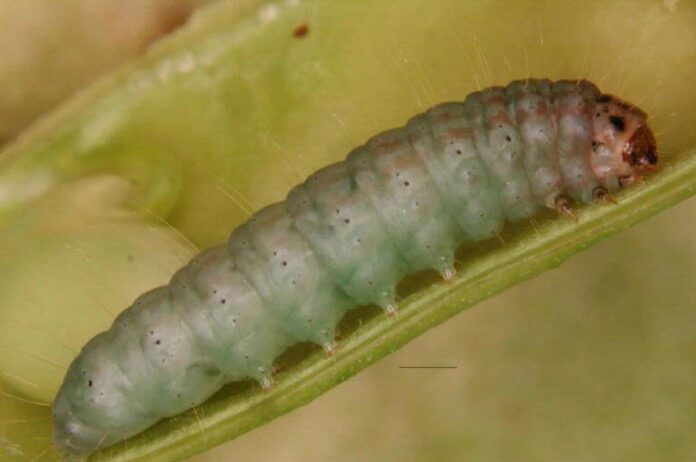According to the Pod borer, Resistant Cowpea Project by the African Agricultural Technology Foundation (AATF), Cowpea (Vigna unguiculata L. Walp) is considered the most important food grain legume in the dry savannas of tropical Africa where it is grown on more than 12.5 million hectares and nearly 200 million people in Africa consume it.
Cowpea, popularly called beans in Ghana, is a very important source of quality protein and rich in energy. It is a good source of income and quality fodder for livestock.
Among the challenges in cowpea production is the pod borer (Maruca vitrata) which accounts for 70-80% yield losses. We have outlined various sustainable procedures to manage pod borers of cowpea.
Prevention
In order to prevent pod borers of cowpeas;
- Do not crop on the same piece of land for more than two seasons (rotate cowpea with maize)
- Deep plough and harrow to kill larvae/pupae or expose them to direct sunlight and predators.
- Remove and destroy volunteer cowpea plants because they may harbour the borer.
- Intercrop cowpea with a non-host plant like maize.
- Remove and destroy alternate host e.g soybean plants and wild leguminous plants.
- Practice good farm sanitation.
Read also: How to manage pests: Anthracnose on pepper
Monitoring
- Visit the field every day after flowering to look for signs of damage.
- Check for eggs on flower buds, flowers and terminal shoots.
- Look for the presence of young caterpillars among flowers and foliage
- Also look for faecal remains of adults and larvae, frass of larvae and malformed pods
- Damaged flowers and newly formed pods with holes
- Inspect fields to look for the presence of more natural enemies such as ladybird beetle and praying mantis.
Direct control
As direct control measures;
- Hand pick eggs and larvae from the plant and crush them
- Prune some leaves (older leaves) to expose larvae to natural enemies and allow direct penetration of sunlight into the canopy
- Remove and destroy leaves with white silk thread where larvae hide
- Create a conducive environment for natural enemies (e.g ladybird beetles, spiders. Praying mantis etc.) to multiply by minimizing spraying and by mulching.
Options with restrictions
These are also methods that you may use. However, use as last resorts and apply lots of caution in its application.
Option 1: Apply cypermethrin (cypercan, fastrack 10SC) at a rate of 40mls/15lits of water. Observe pre-harvest interval of 7 days. Apply early morning and or late evening.
Option 2: Lambda-cyhalothrin 25g/l (e.g conquer super 2.5 EC, Aweradlamp 2.5EC, Bonlambda 2.5EC) at 100ml/15lits of water. Observe the pre-harvest interval (PHI) of 7 days. Apply during early infestation and at early morning or late evening. Always wear protectives when using chemicals.
Read also: Safety Precautions in Agrochemicals handling and usage
CAUTION:
If you choose chemicals to control pests, do well to read and understand its rate of application and take all precautions to protect yourself and other lives. Possibly, let chemical control be your very last resort.


